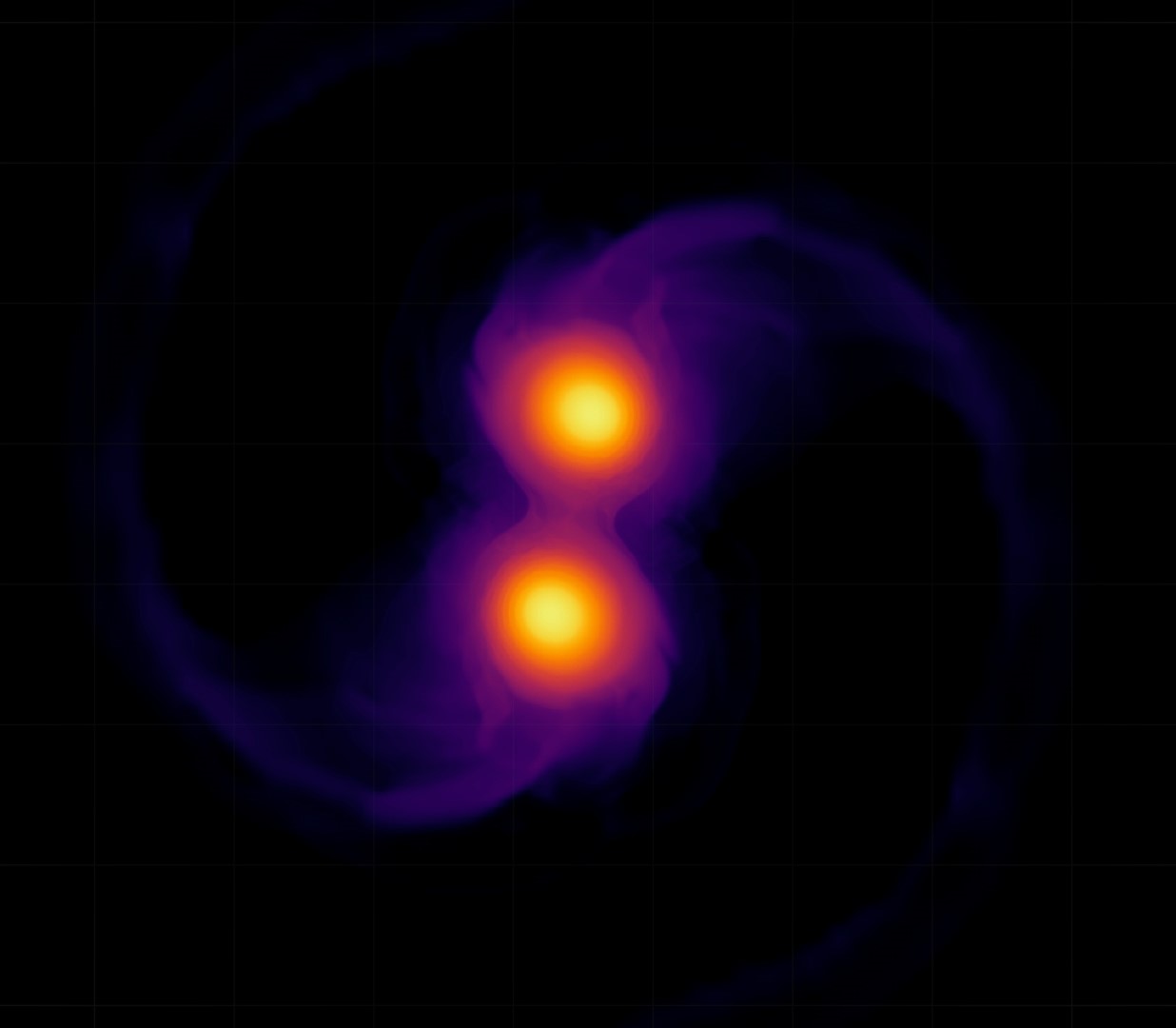Defying Gravity [1]
This simulation depicts the merger of two neutron stars, which are the ultra-dense corpses of massive stars that exploded as supernovae. Recent work shows that as the neutron stars merge, they can revolve around each other at up to 78,000 times per second, generating gravitational waves that ripple through the universe. When the stars merge, that high-speed rotation would hold them up against their combined gravity, preventing the merged stars from collapsing to form a black hole -- for less than a second. Astronomers have found two possible such mergers in observations from the 1990s. [NASA/GSFC/STAG Research Centre/Peter Hammond]
